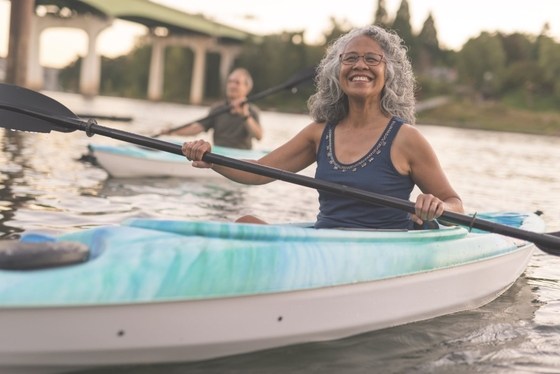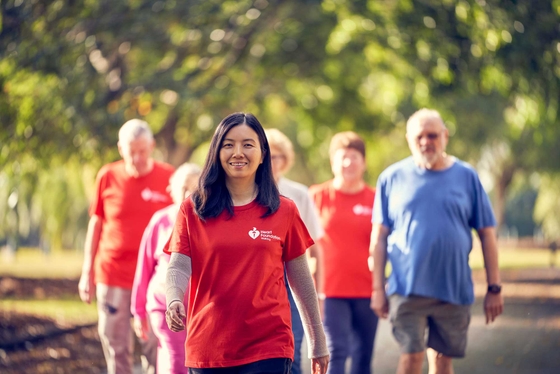
Sit less, move more
Moving more every day is one of the best habits you can have.
Key takeaways
- Spending too much time sitting is bad for your health
- On average, adults spend more than half of their day sitting, which increases the risk of heart disease and Type 2 diabetes
- School children spend over half of their school day sitting
- You can meet physical activity recommendations and still be sitting too much
- Regular breaks from sitting can improve your health at any age.
Sitting habits and heart health
You may be surprised to know that on average, adults sit for nine hours a day, while school children spend over half of their day sitting.
It’s normal to spend a big part of your day sitting. You sit during your daily commute and as you eat your meals. Then, you’re sitting at your desk in school or at work. When you get home, you may watch TV and scroll on your smart phone on the couch. It all adds up.
Of course, sometimes we need to sit so our bodies can rest and recover. But there is now strong evidence that sedentary behaviour, such as too much sitting and lying down, is linked to an increased risk of developing heart disease and Type 2 diabetes.
How much is ‘too much’ sitting?
Everyone from toddlers to older adults can improve their heart health by breaking up the length of time they sit during the day. Even if you’re meeting the recommended activity levels of 30 minutes on five or more days a week, you may still be sitting too much.
The following recommendations are adapted from Australia’s Physical Activity and Sedentary Behaviour Guidelines and the Australian 24-Hour Movement Guidelines.
| Infants, toddlers and pre-schoolers (Birth to 5-years old) |
|
| Children and young adults (5 to 17-years old) |
|
| Adults (18 to 64-years old) |
|
How children can sit less and move more
- Create fun outdoors with kids to help them to enjoy more physical activity – a ball is often all that’s needed!
- Take a walk around the neighbourhood to connect and talk with your kids about their day
- Run errands with your kids to get away from screens and into social places
- Create screen-free days or evenings: for example, every Sunday might be free of phones, computers and tv for the whole family.
- Remove electronic devices from bedrooms
- Do more outdoor activities with children. Try walking or cycling with children to school sometimes
- Be a role model for children by limiting your own time on electronic devices
- Teachers can reduce the time children spend sitting in classrooms and encourage outdoor activities
- Parents and carers can set some ‘active homework’ every week for children.
How adults can sit less and move more
- Limit your time on social media, TV, and phone – there are apps available to help, such as Offtime and Moment
- When watching TV, take some breaks during commercials to walk around the house or do some housework
- Replace watching TV in the evening with taking a walk
- Try standing while you read a newspaper or check messages on your mobile phone
- Take a break every 30 minutes to stand and stretch – set an alarm on your phone or watch to remind you
- Stand to do easy tasks at work, such as a stand-up meeting or phone call
- Consider using a sit-stand workstation
- Choose to do manual tasks where you can, such as washing your car by hand instead of using a drive-through car wash
- Take regular breaks during long car trips.
You might also be interested in...

Types of physical activity
Nine out of 10 Australians could reduce the risk of heart disease by walking as little as 15 minutes more each day.

Physical activity and your heart health
Physical activity and exercise can benefit your heart, body and mind.

Heart Foundation Walking
Our program is Australia’s largest free walking network, and offers Australians multiple ways to walk with us.
Last updated18 March 2024
Last reviewed06 March 2024